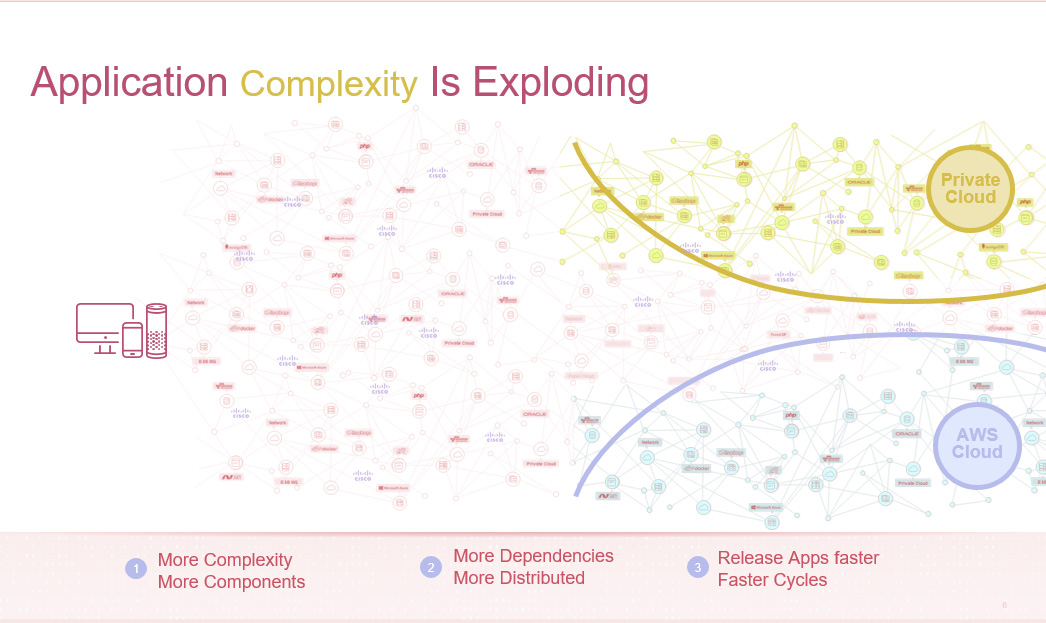Applause for Application

When it comes to business implementations, there is no serious company that does not have its own applications. Weather they are developed in that company or are licensed, it does not matter. It is important that the business of such companies literally depends largely on reliable operation of applications.
When we look at today’s modern world, we can say that the vast majority of the population knows not only what an application is, but it uses at least one of the creations of contemporary society. The revolution that the Internet has brought with itself and inexpensive hardware for computers and phones has made it possible for the computer world to be packed up to the level of your phone. What the day before required sitting in an internet cafe at a public computer, and yesterday sitting at home and working on the computer, today is possible to do on a mobile phone – and much more than that.
Of course, the applications have outgrown the level of personal entertainment and overpriced business applications. Today, the most popular are the cheap or even free applications that are simple and make life easier or more fun. If you asked an average mobile phone user what he would do if someone abolished all the applications he uses regularly, we all know what the answer would be.
When it comes to business implementations, there is no serious company that does not have its own applications. Weather they are developed in that company or are licensed, it does not matter. It is important that the business of such companies literally depends largely on reliable operation of applications. Our region is lagging behind the developed part of the globe when it comes to digital transformation, but we have specifically stepped into this new, unexplored world. Let’s take a financial institution as an example – applications are critical part of the system there. Whether it comes to e-banking software for individuals and legal entities, or web store for purchase of insurance, if something does not work, the company is in trouble.
Can we predict what will happen regarding this issue within the next 5 to10 years? Of course, we can, it’s the easiest question of all. It will be more complicated, diverse and extensive. In the sense that the amount of applications and our dependence on them will only increase. Looking from our own and perspective of our customers, it appears so.. And from the perspective of those who provide services? Their profits and reputation will also increasingly depend on a growing number of their applications. Even those who are not using this form of advertising and sales will start to do that; no doubt about it.
There are various aspects of this trend and various implications, and the reader may now ask himself: “So, what’s the point?”. The point is that in that hot soup we are all trying to cope, and those who make their living on the adequate operation of these applications are trying to ensure that they operate continuously and perfectly. Welcome to the world of APM – Application Performance Monitoring. Until a few years ago, this was a topic which bothered only large companies. Really large. It cost too much, implementations were painful and long lasting, and the usage of such monitoring software required special knowledge and time-consuming manual adjustment. And when you know that we are talking about “only” monitoring of what is already paid (applications) which somehow implies that everything will be all right, it is clear why this topic was not very popular – especially in our region.
Fortunately, the exponential development of software applications has led to a breakthrough in the APM sphere. Today there are solutions that are not expensive, do not require long-term implementation and do not require a doctoral dissertation to set it up and use.
Let’s imagine that it is possible to automatically create a “flow map” that shows in real time the interdependence of individual layers of the application being monitored (for example, between web server, application server and database). In addition to real-time data, user could go backward for arbitrary time and compare the present situation with what had happened before – maybe problems have been reported, there might be a change in software architecture and so on. In this way, performance of some applications are being closely monitored, and in addition to that, visibility of its architecture dramatically increases in cases (which are not uncommon, on the contrary) when a company does not know in detail what is happening in the code and which infrastructure and services the particular application is using.

It would be great if connection of business parameters with IT parameters were possible. The Executive Board of a bank, of course, is not interested in how many milliseconds on average a database needs to answer a query, they are much more interested to know whether the business application behaves as expected, whether they are losing profit at some point, which user is potentially damaged and how this can be quantified. All these parameters would be connected at one point and IT operations could get what they need, and also owners of business processes and business leaders would receive the desired business data in a quick way.
In the end, all this should be achieved without changing the source code – if applications were written in some of the known environments/languages such as .NET, Java, PHP, Node.js and similar. This option would bring enormous flexibility and usability and would allow deep penetration into programming code and in case of problems, it would be easy to diagnose them up to the level of the method that was called up to that moment – and thus caused the error, or large hold before the method was executed. The principle of “not touching” the source code is very important, because today applications are written quickly and changed very often, therefore it is necessary to avoid the situation where APM component is adapted every time you change the code.
All the above mentioned, and even more than that,is found in the best APM software seen in recent years. This is Cisco AppDynamics that raises APM bar to the next level. It was expected from Cisco to move in this direction given they have been announcing for several years now their intention to increasingly invest in the software business. Today’s serious business cannot be imagined without professional applications, and this leads to the necessity of investing in a quality APM solution that is fast to deploy and which provides a deep and detailed visibility. This concept fits perfectly into the strategy of Saga, which is to successfully weather the rough seas of the digital transformation together with customers and safely dock into the port of the digital society.

